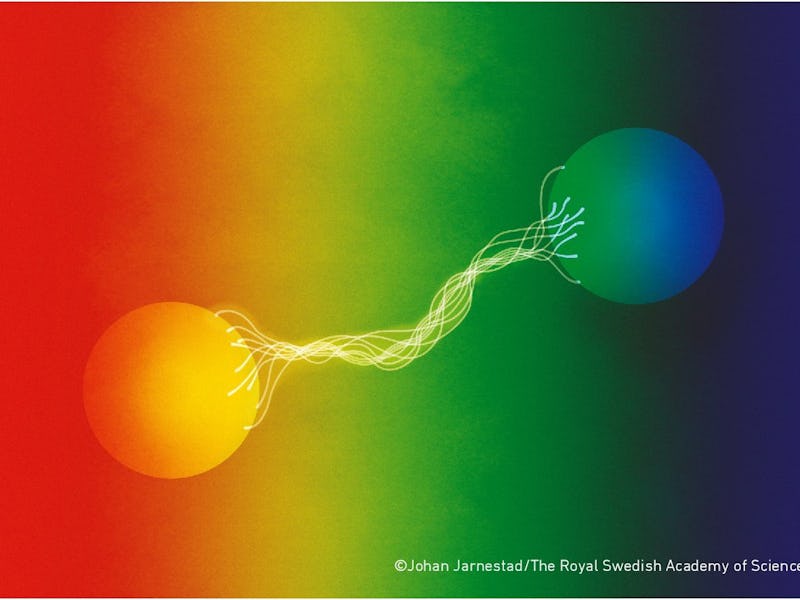Three physicists win the Nobel for groundbreaking work on quantum entanglement
Alain Aspect, John Clauser, and Anton Zeilinger share the Prize in equal parts.

“Is nature a trickster?” On Tuesday, the Nobel Committee posed this question regarding what may be nature’s slightest sleight of hand: quantum mechanics.
Quantum mechanics is an area of physics that deals with all things subatomic. This field throws a wrench into pre-existing classical physics, which gave us the Standard Model that explains three of the universe’s four forces and identifies all known subatomic particles. Quantum mechanics endeavors to predict where a particle will be at any given moment. Simple stuff.
There’s one especially tricky aspect of quantum mechanics known as entanglement. This phenomenon occurs when two particles, even if they’re far from each other, act in unison. Effects on one particle will also impact its pair. Even though they’re separate, they operate as a single unit. Einstein described this behavior as “spooky action at a distance.”
This year, Alain Aspect, John Clauser, and Anton Zeilinger share the Nobel Prize in Physics for their respective contributions to quantum mechanics, demonstrating not only its theoretical capacities but also showing that photons in entangled states are all around us.
How it all started — Irish physicist John Stewart Bell published a 1964 paper developing a mathematical inequality known as Bell’s inequality. According to this principle, if hidden variables exist within the entangled pair, then the correlation between results of a large number of measurements will always remain within certain boundaries.
Quantum mechanics, however, says that some kind of experiment will violate Bell’s inequality. This violation implicates a stronger correlation than thought possible between two particles.
How this changed science as we know it — American John Clauser created a practical experiment from Bell’s theory. He’s the one who found the experiment that violated Bell’s inequality while supporting quantum mechanics, meaning that a theory using hidden variables can’t replace quantum mechanics.
Alain Aspect of France further built on this finding, closing a loophole in Clauser’s finding. He modified the experiment’s measurement settings after an entangled pair had launched from its source. The existing setting then couldn’t affect the resulting measurements.
Austrian Anton Zeilinger toyed with these entangled quantum states. His research depicted a principle called quantum teleportation, in which one particle can move quantum states over a distance.
Why these discoveries are important — A goal of quantum mechanics, the Nobel Committee says, is to build a quantum network. They describe this network as a series of nodes that use quantum entanglement to communicate. This network has applications in encryption and quantum computing, which can synthesize astronomical amounts of information.
Understanding entanglement is key since it’s what ties this network together. However, entanglement is brittle and comes apart in optical fibers meant to transmit it.
Recipient Anton Zeilinger said on a call when the award was publicly announced that the next generation will be the ones to build on the remaining questions. "This prize is an encouragement to young people," he said. He also acknowledged the more than 100 students he had worked with to even get this far. While physicists have made strides in this area, there's still a long way to go.